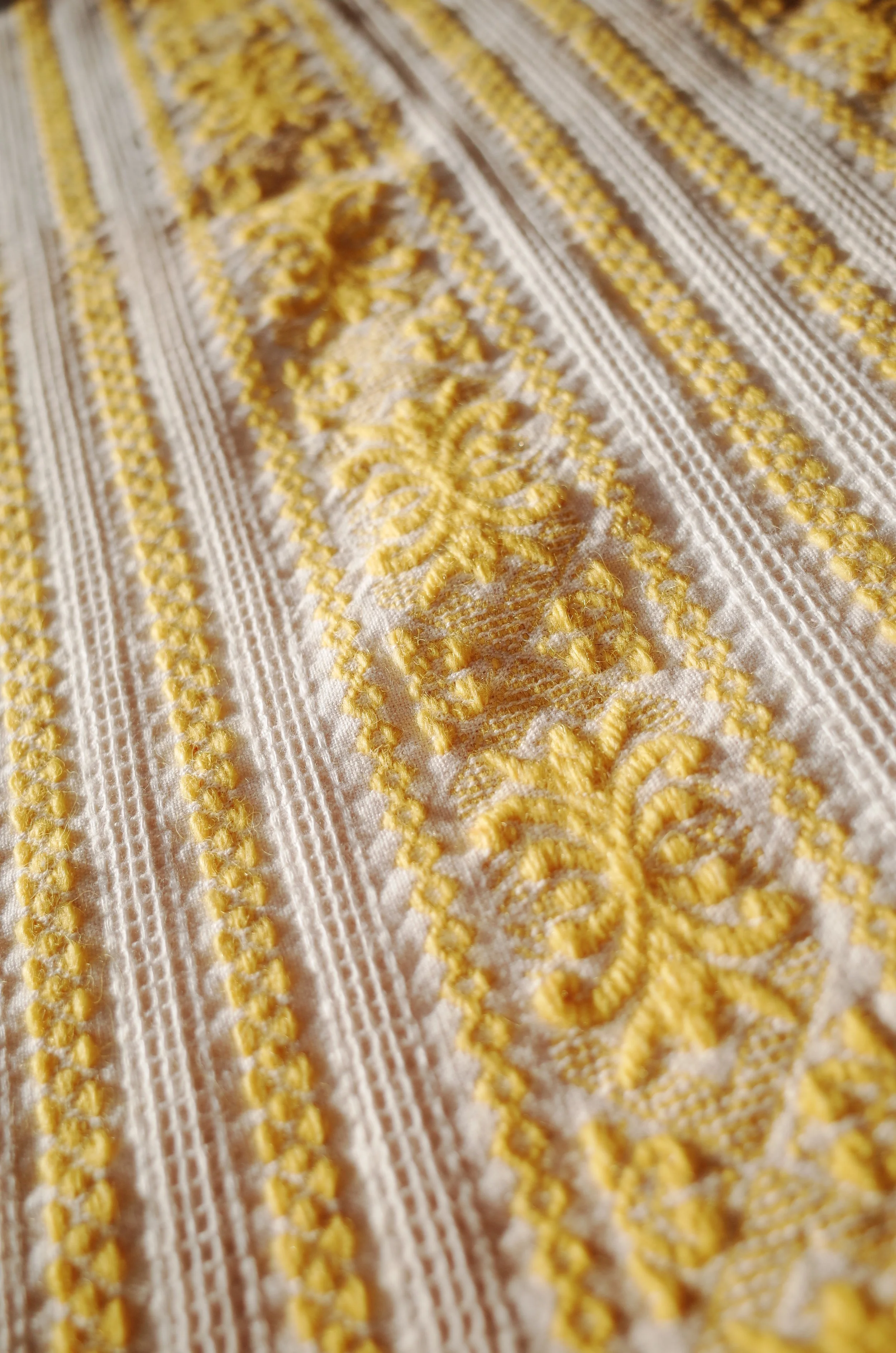
Textile Histories
A fledgling but spirited initiative, the Ithacan Historical Society now endeavours to account for the vital role that textiles have played in the history of Ithaca and in the practices and imaginings of the diaspora.
Written by Penelope Vakalopoulos, Ageliki Vidalis, and Tommy Dendrinou
Two Ithacan ladies in watercolour by Gerasimos Pitsamanos, circa 1820 (National Historical Museum, Athens, no. 1483-110)
Social history through textiles
No account of history is complete without a thorough look at how textile production formed the bedrock of both economic and social life for millenia, how it fed the cultural and mythological imagination, and how women, as the natural champions of the fibre crafts, devoted both their labour and creativity to spinning, sewing and weaving – forms of work compatible with the demands of child-rearing, and forms of work within which familial and social connections could nest.
Our project is an attempt to mobilise both interest and skills in this important area of hand-made textiles — their history as well as modern practice, practical craft as well as material culture, memories and stories.
The fact that most homes in Greece used to have a loom and women who worked on it, but are now bereft not only of looms but of the skills and knowledge of fibre crafts, means we have a gap to fill in preserving an important tradition and reproducing it in our times. This is also an area of women's history that needs emphasis.
Women played important economic roles throughout history even when they stayed at home.
Τhey were responsible for the family's textile production (among other work which was easily integrated to child-rearing) which meant their households depended on their productive labour as much as they did on mens' labour outside of the home.
Lastly, this is an attempt to create a space for those who are learning and practising various fibre crafts to come together to share skills and inspiration.
Project relaunch
Highlights from the event 'Threads of Memory – Reviving the Textile Traditions of our Ancestry', held at Ithaca House, Melbourne, on 16 November 2025.
The event was a relaunch of the Ithacan Historical Society's Textiles project. This is an initiative led by our younger Ithacan members who are stepping forward to relaunch the IHS Textiles project once known as Penelope's Loom. Guest speaker was Kathryn Gauci, acclaimed author and textile historian, passionate about preserving traditional craft.
Watch highlights from the event here.
View event photos here.
The ancestral thread
Through our Ithacan ancestry, we participate in a rich textile legacy, crystallising in the Homeric figure of Penelope – Queen of Ithaca, devoted wife of Odysseus, and industrious weaver.
As the story goes, Penelope wove a burial shroud for her father-in-law, Laertes, as a ploy to stave off the forces intent on rending apart her marriage and family – the many disingenuous suitors who sought her hand in marriage in order to replace Odysseus as King.
Penelope promised to remarry only upon completion of the burial shroud, a condition accepted by the suitors. Little did they know that any weaving Penelope accomplished during the day, she would unravel at night by torchlight.
After three years, Penelope’s scheme was eventually exposed, but by this time, Odysseus was brought back as if by a “superhuman force” (daimōn).
Foreground: Penelope and her loom depicted on a clay skyphos, circa 440 BC (Museo Nazionale Etrusco di Chiusi, Italy)
Background: Terracotta lekythos (oil flask) depicting women making woolen cloth, 550–530 BCE (The Metropolitan Museum of Art)
The web Penelope wove for the sake of the sanctity of her marriage and family remains to this day a potent image of the craft and cunning women have championed throughout history to both material and social ends.

Nina Kondelos née Paxinos (Bousouli), photographed in Lefki, circa 1952 (courtesy D. Argyropoulos)
Textiles in Ithaca’s history
For much of history Ithacan women have worked at looms producing all manner of textiles, including made-to-order blankets, called botanies, and rag-rugs.
Each village also had women who specialised in the laborious and vital preparatory work required before weaving can begin – from designing the material and pattern, to processing and spinning raw wool into yarn, winding the warp threads in the particular manner required by the given project, and then threading the warp onto the loom.
This work “before the warp reaches the loom”, was known as diastres (diasidi meaning “warp”).
Payment for custom textiles worked according to the pihi (a measure of cloth, the length of a forearm or 64cm), or by length upon agreement. There were also embroiderers (kentistres), who embellished linens, sheets, pillow cases, curtains, table cloths, etc., for bridal dowries. Samples of their work can still be found adorning households today.
Decorated distaff (ρόκα) from Ithaca, inscribed with date 1892. Collected by the anthropologist Edith Durham (Museum of Archaeology and Anthropology, University of Cambridge, no. 1938.42)
From the Society’s collection
Old traditions, new technologies
Up until the advent of the sewing machine handicrafts and dowries were embroidered using linen and cotton fabric and all done by hand. However, in the late 1920s and 1930s the Singer Company came to Ithaca and taught the girls embroidery on the machine.
Even in those days there were merchants who travelled to the villages and sold machine-made goods for the trousseaus, but most of the dowries consisted of the beautifully crafted work of the women.
Adamandine (Mandina) Varvaregos sitting at her Singer sewing machine, Ithaca, before 1938 (IHS no. 0883)
Vasiliki Raftopoulos, Ithacan raised in Romania, crocheting a very fine border in a traditional design, ca 1930s (IHS no. 0286)









